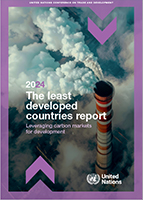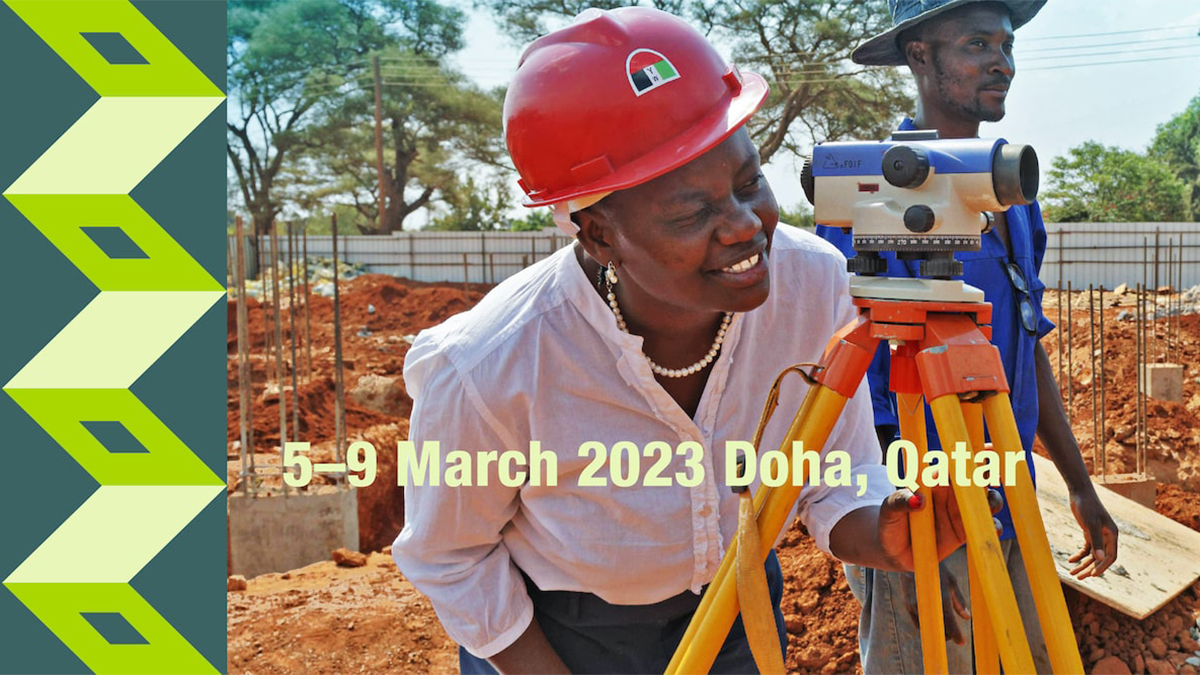There are currently 44 economies designated by the United Nations as the least developed countries (LDCs), entitling them to preferential market access, aid, special technical assistance, and capacity-building on technology among other concessions.
(44 countries)
Africa 32, Asia 8, Caribbean 1, Pacific 3

Date: December 2024
These 44 LDCs are distributed among the following regions:
- Africa (32): Angola, Benin, Burkina Faso, Burundi, Central African Republic, Chad, Comoros, Democratic Republic of the Congo, Djibouti, Eritrea, Ethiopia, Gambia, Guinea, Guinea-Bissau, Lesotho, Liberia, Madagascar, Malawi, Mali, Mauritania, Mozambique, Niger, Rwanda, Senegal, Sierra Leone, Somalia, South Sudan, Sudan, Togo, Uganda, United Republic of Tanzania and Zambia
- Asia (8): Afghanistan, Bangladesh, Cambodia, Lao People’s Democratic Republic, Myanmar, Nepal, Timor-Leste and Yemen
- Caribbean (1): Haiti
- Pacific (3): Kiribati, Solomon Islands and Tuvalu
Country profiles of all 44 LDCs
Establishment of the list of LDCs
The list of LDCs is reviewed every three years by the Committee for Development Policy (CDP), a group of independent experts that reports to the Economic and Social Council (ECOSOC) of the United Nations. Following a triennial review of the list, the CDP may recommend, in its report to ECOSOC, countries for addition to the list or graduation from LDC status.
The next triennial review is scheduled to take place in 2027. The CDP is bound to apply the criteria and the thresholds for inclusion into the LDC category and for graduation from the category as follows:
- An income criterion, based on a three-year average estimate of the gross national income (GNI) per capita in United States dollars. The threshold for inclusion is $1,088 or below; the threshold for graduation is $1,306 or above.
- A human assets index (HAI), consisting of two sub-indices: a health sub-index and an education sub-index.
The health sub-index has three indicators: (i) the under-five mortality rate; (ii) the maternal mortality ratio; and (iii) the prevalence of stunting.
The education sub-index has three indicators: (i) lower secondary school completion rate; (ii) adult literacy rate; and (iii) gender parity index for lower secondary school completion.
All six indicators are converted into indices using established methodologies with an equal weight. The thresholds for inclusion and graduation are 60 or below and 66 or above, respectively.
- An economic and environmental vulnerability index (EVI), consisting of two sub-indices: an economic vulnerability sub-index and an environmental vulnerability sub-index.
The economic vulnerability sub-index has four indicators: (i) share of agriculture, forestry and fishing in GDP; (ii) remoteness and landlockedness; (iii) merchandise export concentration; and (iv) instability of exports of goods and services.
The environmental vulnerability sub-index has four indicators: (i) share of population in low elevated coastal zones; (ii) share of the population living in drylands; (iii) instability of agricultural production; and (iv) victims of disasters.
All eight indicators are converted into indices using established methodologies with an equal The thresholds for inclusion and graduation are 36 or above and 32 or below, respectively.
At each triennial review, all countries in developing regions are reviewed against the criteria. If a non-LDC meets the established inclusion thresholds for all three criteria in a single review, it can become eligible for inclusion. Inclusion requires the consent of the country concerned and becomes effective immediately after the General Assembly takes note of the CDP's recommendation. No recommendations were made for inclusion at the CDP’s 2021 triennial review.
To graduate from the LDC category, a country must meet the established graduation thresholds of at least two of the criteria for two consecutive triennial reviews. Countries that are highly vulnerable, or have very low human assets, are eligible for graduation only if they meet the other two criteria by a sufficiently high margin. As an exception, a country whose per capita income is sustainably above the “income-only” graduation threshold, set at three times the graduation threshold ($3,918), becomes eligible for graduation, even if it fails to meet the other two criteria.
LDC graduation
Eight countries have graduated from least developed country status:
- Botswana in December 1994
- Cabo Verde in December 2007
- Maldives in January 2011
- Samoa in January 2014
- Equatorial Guinea in June 2017
- Vanuatu in December 2020
- Bhutan in December 2023
- Sao Tome and Principe 2024
The CDP has recommended graduation from the LDC category for several countries in the past.
Bangladesh, the Lao People's Democratic Republic and Nepal are scheduled for graduation in 2026; Solomon Islands is scheduled for graduation in 2027; and Cambodia and Senegal are scheduled for graduation in 2029.
At the 2024 triennial review, Rwanda, Uganda and the United Republic of Tanzania were found to have met the graduation thresholds for the first time. All three countries met two of the three criteria, namely the economic and environmental vulnerability index criterion and the human assets index criterion. These countries are scheduled to be considered again in 2027 and, if they meet the criteria for a second time, could be recommended for graduation.
Kiribati and Tuvalu were recommended for graduation in 2018 and 2012, respectively, but ECOSOC deferred a decision on their graduation. In resolution 2024/7, ECOSOC, recalling its decision in 2021 to defer the consideration of their graduation to 2024, further decided to consider their graduation at a later date.
At the 2024 triennial review, the CDP decided to defer its decision on the graduation of Myanmar and Timor-Leste to 2027.




